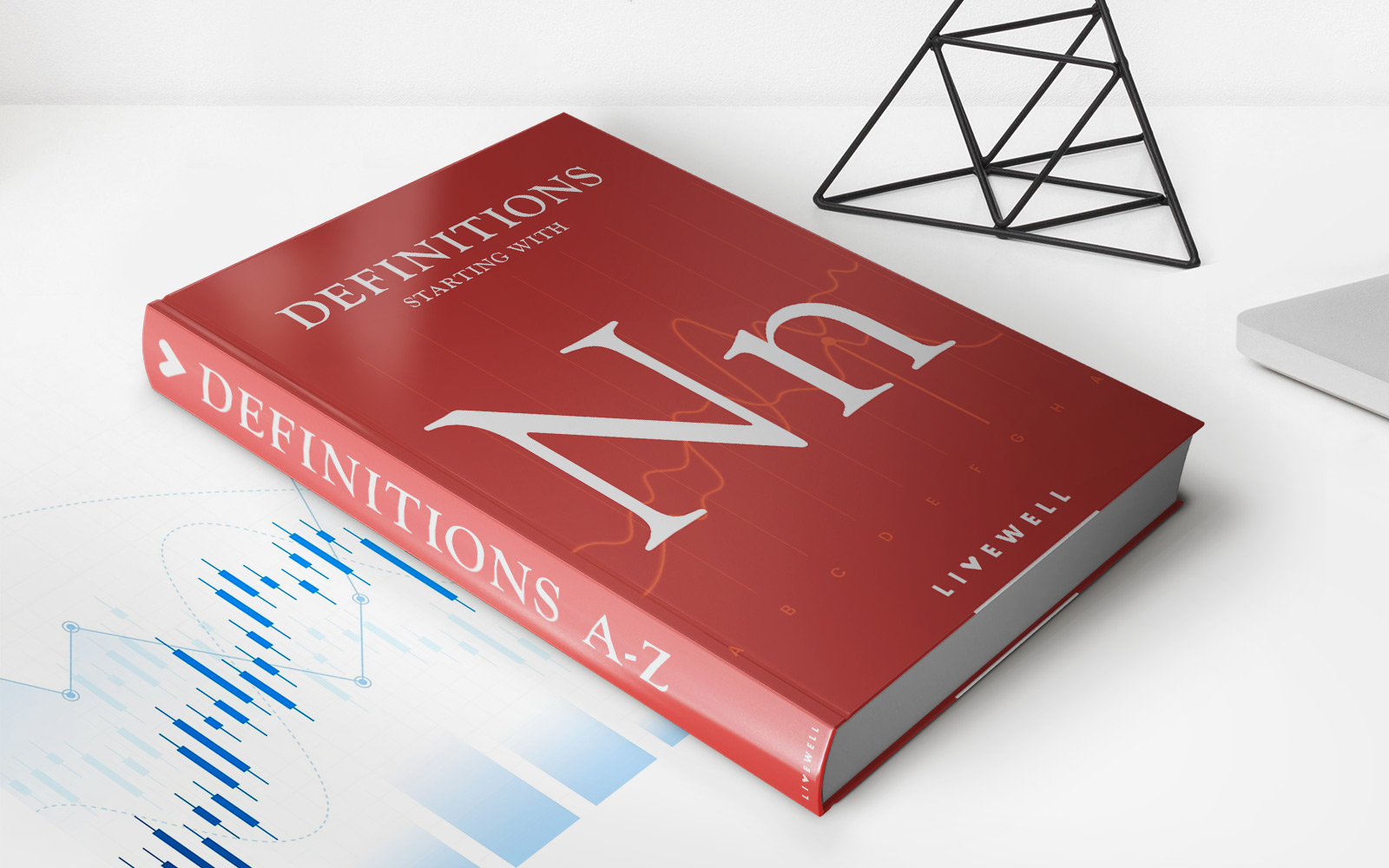Home>Finance>What Is A Contingent Beneficiary In Life Insurance?


Finance
What Is A Contingent Beneficiary In Life Insurance?
Published: November 12, 2023
Learn about contingent beneficiaries in life insurance and how they play a crucial role in securing your financial future. Discover the importance of designating a backup beneficiary to ensure financial protection.
(Many of the links in this article redirect to a specific reviewed product. Your purchase of these products through affiliate links helps to generate commission for LiveWell, at no extra cost. Learn more)
Table of Contents
- Introduction
- Understanding Life Insurance Beneficiaries
- What is a Contingent Beneficiary?
- Importance of Contingent Beneficiaries
- Difference between Primary and Contingent Beneficiaries
- Designating a Contingent Beneficiary
- Changing a Contingent Beneficiary
- Key Considerations for Naming a Contingent Beneficiary
- Final Thoughts
Introduction
Life insurance is a crucial tool for providing financial security to your loved ones in the event of your passing. One key aspect of life insurance is designating beneficiaries who will receive the policy’s death benefit. While most people are familiar with the concept of primary beneficiaries – those who are first in line to receive the proceeds – there is another type of beneficiary that is equally important: the contingent beneficiary.
A contingent beneficiary is a secondary recipient who will receive the policy’s death benefit if the primary beneficiary is unable to do so. This could occur if the primary beneficiary predeceases the policyholder or is unable to receive the proceeds for any other reason. Understanding the role of a contingent beneficiary is vital when developing your life insurance plan, as it ensures that your wishes are honored and that your loved ones are financially protected.
In this article, we will explore the concept of a contingent beneficiary in life insurance, its importance, and how to designate one.
Understanding Life Insurance Beneficiaries
In order to fully grasp the significance of a contingent beneficiary, it is important to first understand the concept of life insurance beneficiaries as a whole. A beneficiary is an individual or entity that you designate to receive the death benefit from your life insurance policy when you pass away.
Typically, policyholders select one or more primary beneficiaries who are first in line to receive the proceeds. These primary beneficiaries can be spouses, children, family members, friends, or even charitable organizations. The primary beneficiary (or beneficiaries) will receive the death benefit upon the policyholder’s death.
However, it is not uncommon for primary beneficiaries to either pass away before the policyholder or be unable to receive the proceeds due to certain circumstances. This is where contingent beneficiaries come into play.
A contingent beneficiary is a backup option, essentially a plan B, in case the primary beneficiary is unable to receive the death benefit for any reason. By naming a contingent beneficiary, you ensure that the death benefit will still go to someone you choose, even if your primary beneficiary cannot receive it.
Having a contingent beneficiary is crucial because it provides a safety net and helps avoid potential complications or issues in the distribution of the death benefit. You want to be sure that your desired beneficiaries are taken care of, regardless of any unforeseen circumstances.
Now that we have a basic understanding of life insurance beneficiaries, let’s delve deeper into the specific role and importance of a contingent beneficiary.
What is a Contingent Beneficiary?
A contingent beneficiary is the individual or entity who will receive the death benefit from a life insurance policy if the primary beneficiary is unable to do so. They are essentially the backup option, the secondary recipient of the policy’s proceeds.
The contingent beneficiary comes into play when one of the following scenarios occurs:
- The primary beneficiary passes away before the policyholder
- The primary beneficiary disclaims or refuses to accept the death benefit
- The primary beneficiary is unable to be located
When any of these situations occur, the contingent beneficiary steps in and becomes the rightful recipient of the death benefit. They inherit the rights and privileges that would have been given to the primary beneficiary.
It is important to note that a contingent beneficiary does not have any claim or right to the death benefit while the primary beneficiary is alive and able to accept it. The contingent beneficiary only comes into play if the primary beneficiary cannot fulfill their role.
The contingent beneficiary can be anyone you choose, including a spouse, child, relative, friend, or even an organization. It is critical to clearly identify the contingent beneficiary and provide their full legal name and contact information when setting up your life insurance policy.
By designating a contingent beneficiary, you have control over who will receive the policy’s proceeds if the primary beneficiary is unable to do so. This ensures that your wishes are followed and that your loved ones are taken care of even in unforeseen circumstances.
Importance of Contingent Beneficiaries
Contingent beneficiaries play a crucial role in ensuring that your life insurance proceeds are distributed according to your wishes. Here are some key reasons why naming contingent beneficiaries is important:
- Ensuring the continuity of your financial plans: Life is unpredictable, and circumstances can change. By designating contingent beneficiaries, you are taking proactive steps to ensure that your desired recipients will receive the death benefit, regardless of any unexpected events that may occur.
- Providing for your loved ones: By naming contingent beneficiaries, you are ensuring that your loved ones, such as your spouse, children, or other dependents, are financially protected in the event that the primary beneficiary is unable to claim the death benefit. This provides an added layer of security and peace of mind.
- Protecting against disinheritance: Without a contingent beneficiary, if the primary beneficiary is unable to receive the death benefit, the policy proceeds may be distributed according to state laws or the policy’s default provisions. This can potentially result in unintended consequences and individuals who you did not intend to benefit from the policy receiving the proceeds.
- Flexibility and contingency planning: Life circumstances can change, and relationships can evolve. By having a contingent beneficiary, you have the flexibility to update and modify your beneficiary designations to reflect any changes in your life. This allows you to adapt your life insurance plan to reflect your current wishes and ensure that the right individuals or organizations are designated as recipients.
- Minimizing delays and confusion: By clearly designating a contingent beneficiary, you are minimizing the chances of delays or complications in the distribution of the death benefit. This helps streamline the claims process and ensures that the policy’s proceeds are disbursed smoothly to the intended recipients.
It is crucial to review and update your contingent beneficiary designations periodically, especially when major life events occur, such as marriage, divorce, the birth of a child, or the death of a loved one. This helps to ensure that your life insurance plan remains aligned with your current wishes and the needs of your loved ones.
By taking the time to carefully consider and designate contingent beneficiaries, you are prioritizing the financial well-being of your loved ones and ensuring that your life insurance policy serves its intended purpose.
Difference between Primary and Contingent Beneficiaries
Primary and contingent beneficiaries are both important roles in a life insurance policy, but they serve different purposes and have different rights and responsibilities. Here are the key differences between primary and contingent beneficiaries:
Primary Beneficiary:
- The primary beneficiary is the first in line to receive the death benefit upon the policyholder’s passing.
- If the primary beneficiary is alive and able to accept the death benefit, they have full rights to claim and receive the proceeds.
- Policyholders can designate multiple primary beneficiaries and allocate specific percentages of the death benefit to each individual or entity.
- If the primary beneficiary is unable to claim the death benefit, it does not automatically pass to the contingent beneficiary.
- If one of the primary beneficiaries passes away before the policyholder, the other primary beneficiaries will typically receive their share of the death benefit.
Contingent Beneficiary:
- The contingent beneficiary is the secondary recipient who will receive the death benefit if the primary beneficiary is unable to do so.
- If the primary beneficiary is unable to accept the death benefit, the contingent beneficiary steps in and becomes the rightful recipient.
- Contingent beneficiaries only have a claim to the death benefit if the primary beneficiary cannot receive it.
- Policyholders can designate multiple contingent beneficiaries and specify the order in which they would receive the proceeds.
- If no contingent beneficiary is named or all designated contingent beneficiaries are unable to receive the death benefit, the proceeds may be distributed according to state laws or the default rules of the life insurance policy.
The primary beneficiary is the first choice for receiving the death benefit, while the contingent beneficiary acts as a backup option if the primary beneficiary cannot accept the proceeds.
It is important to consider the contingent beneficiary designation carefully and update it when necessary to reflect any changes in your circumstances or preferences.
Consulting with a financial advisor or estate planning professional can help ensure that you understand the distinctions between primary and contingent beneficiaries and make informed decisions when setting up your life insurance policy.
Designating a Contingent Beneficiary
Designating a contingent beneficiary for your life insurance policy is a critical step in ensuring that your intended recipients are protected if the primary beneficiary is unable to receive the death benefit. Here are the key steps to follow when designating a contingent beneficiary:
- Review your policy: Understand the terms and conditions of your life insurance policy to determine whether it allows for contingent beneficiaries. Some policies may have specific requirements or limitations on who can be named as contingent beneficiaries.
- Identify your contingent beneficiary: Consider who you would like to designate as your contingent beneficiary. This could be a spouse, child, relative, friend, or even a charitable organization. Clearly identify their full legal name and contact information.
- Determine the order of beneficiaries: If you have multiple contingent beneficiaries, specify the order in which they would receive the death benefit. This ensures clarity and eliminates any confusion in the event that the primary beneficiary is unable to receive the proceeds.
- Complete the necessary paperwork: Contact your life insurance provider or review your policy documents to understand the process for designating or updating beneficiaries. Typically, you would need to fill out a beneficiary designation form provided by the insurance company.
- Provide detailed information: When completing the beneficiary designation form, provide accurate and detailed information about your contingent beneficiary. Include their full legal name, relationship to you, date of birth, and contact information. This helps ensure that there are no errors or confusion when it comes time to distribute the death benefit.
- Update regularly: Periodically review and update your contingent beneficiary designations, especially when major life events occur, such as marriage, divorce, the birth of a child, or the death of a loved one. These changes may impact your desired beneficiaries, so it is essential to keep your policy up to date.
It is also advisable to consult with a financial advisor or estate planning professional when designating beneficiaries for your life insurance policy. They can provide guidance based on your specific circumstances and help ensure that your wishes are accurately reflected in your policy documents.
Remember that designating a contingent beneficiary is a crucial aspect of your life insurance planning, providing an additional layer of protection and ensuring that your loved ones are taken care of even in unforeseen circumstances.
Changing a Contingent Beneficiary
Life is dynamic, and circumstances can change over time. It is important to review and update your life insurance policy beneficiaries regularly, including your contingent beneficiaries, to ensure that your wishes are accurately reflected. Here are the key steps to follow when changing a contingent beneficiary:
- Review your current beneficiary designations: Take the time to review your existing life insurance policy and determine who the current primary and contingent beneficiaries are. Understand the order of beneficiaries and any specific instructions or restrictions set forth in the policy.
- Consider your desired changes: Evaluate whether you need to make any changes to your contingent beneficiary designations. Perhaps your relationship with the current contingent beneficiary has changed, or you would like to designate additional contingent beneficiaries to ensure a wider range of protection.
- Notify your insurance provider: Contact your life insurance provider and inquire about their process for changing beneficiaries. They will typically provide you with the necessary forms or guidance to make the changes. You may be required to fill out a new beneficiary designation form or submit a written request to update the beneficiaries.
- Update the necessary paperwork: Complete the required forms accurately and thoroughly. Clearly identify the contingent beneficiaries you wish to designate, providing their full legal names, contact information, and their relationship to you. Be sure to follow the specific instructions provided by your insurance provider to ensure that the changes are processed correctly.
- Verify and confirm the changes: After submitting the updated beneficiary designation forms or request, verify with your insurance provider that the changes have been processed. Request written confirmation that the changes have been implemented to keep for your records.
- Communicate the changes with your beneficiaries: It can be beneficial to inform your contingent beneficiaries about the changes you have made. This helps avoid confusion or potential disputes in the future and ensures that they are aware of their designation as contingent beneficiaries.
Remember, it is essential to review and update your contingent beneficiary designations periodically, particularly after major life events such as marriage, divorce, the birth of a child, or the death of a loved one. These changes may have an impact on your desired contingent beneficiaries, so it is crucial to keep your policy up to date to align with your current wishes.
Consulting with a financial advisor or estate planning professional can also provide valuable guidance and ensure that your beneficiary changes are in line with your overall financial and estate planning goals.
Key Considerations for Naming a Contingent Beneficiary
When naming a contingent beneficiary for your life insurance policy, there are several important factors to consider. Taking the time to carefully evaluate these considerations will help ensure that your contingent beneficiary designation aligns with your wishes and provides the necessary protection for your loved ones. Here are key factors to consider:
- Relationship and Dependence: Consider your relationship with the potential contingent beneficiary and their level of dependence on you. Are they a spouse, child, or dependent family member who relies on your financial support? Is there someone else you want to provide for, such as a close friend or charitable organization?
- Financial Stability: Evaluate the financial stability of the potential contingent beneficiary. Are they responsible with money management, or do they struggle with financial matters? Consider whether they have the necessary knowledge and skills to handle a potentially large sum of money.
- Age and Life Expectancy: Take into account the age and life expectancy of the potential contingent beneficiary. If you are designating a minor, consider appointing a trustworthy adult as a guardian to manage the funds on their behalf until they come of age.
- Legal Considerations: Understand the legal requirements and limitations for naming a contingent beneficiary. Some jurisdictions may have specific rules or restrictions when it comes to beneficiary designations, such as community property laws or restrictions on naming minors.
- Multiple Contingent Beneficiaries: Consider whether you want to designate multiple contingent beneficiaries and specify the order in which they will receive the death benefit. This ensures clarity and eliminates any confusion in the event that the primary beneficiary is unable to receive the proceeds.
- Flexibility and Updates: Keep in mind that you can update your beneficiary designations at any time. Review your contingent beneficiary designations periodically and make changes as needed, especially after major life events or changes in your relationships.
- Professional Advice: It is wise to seek guidance from a financial advisor or estate planning professional when making decisions about contingent beneficiaries. They can help you navigate the complexities and provide valuable insights based on your specific circumstances.
Remember, the contingent beneficiary designation is a crucial aspect of your life insurance planning, as it ensures that your intended recipients are protected if the primary beneficiary cannot receive the death benefit. By considering these key factors, you can make informed decisions and help ensure the financial security of your loved ones.
Final Thoughts
The contingent beneficiary designation is a vital component of your life insurance policy. It ensures that your desired recipients are financially protected in the event that the primary beneficiary is unable to receive the death benefit. By carefully considering and designating contingent beneficiaries, you have the peace of mind that comes with knowing your loved ones will be taken care of.
It is crucial to review and update your contingent beneficiary designations regularly, especially after major life events or changes in your relationships. Life is unpredictable, and circumstances can change, so you want to ensure that your life insurance policy aligns with your current wishes and provides the necessary protection for your loved ones.
Consulting with a financial advisor or estate planning professional can provide invaluable guidance when it comes to naming contingent beneficiaries. They can help you navigate the complexities, understand the legal requirements, and ensure that your beneficiary designations are in line with your overall financial and estate planning goals.
Remember to keep your family members and loved ones informed about your life insurance policy and the designations you have made. Clear communication helps avoid confusion and potential disputes in the future. Letting them know about the existence of the policy and who the primary and contingent beneficiaries are can provide them with peace of mind and clarity about how your financial affairs will be handled.
Lastly, always keep your life insurance policy documents and beneficiary designations in a safe and accessible place. Inform your designated beneficiaries and loved ones about the location of these important records. Regularly review and update your beneficiary designations as needed, ensuring that your policy reflects your current wishes.
By understanding the importance of contingent beneficiaries and taking the necessary steps to designate them, you can have confidence that your life insurance policy will fulfill its intended purpose: providing financial security to your loved ones when they need it most.














